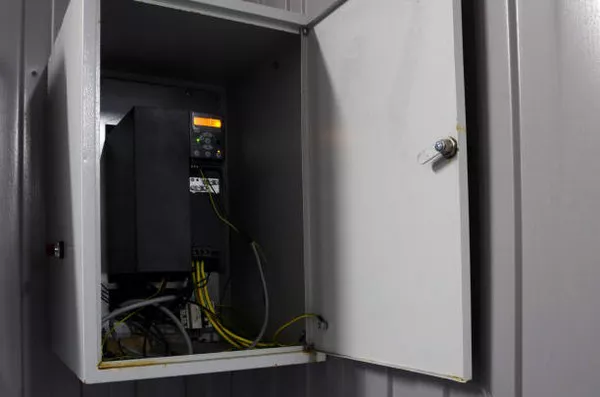Power outages are inevitable, and having a backup generator can be a lifesaver during such times. However, not all generators are created equal, and determining the right size to power essential appliances like furnaces can be perplexing. In this article, we delve into the intricacies of choosing the appropriate generator size to ensure your furnace operates seamlessly during power outages.
Understanding Generator Sizing:
Before delving into the specifics of sizing a generator for a furnace, it’s crucial to understand some fundamental concepts. Generators are rated by their maximum power output, typically measured in kilowatts (kW) or watts (W). This rating denotes the maximum amount of electrical power the generator can supply. In contrast, appliances like furnaces are rated by their power consumption, usually in watts or kilowatts.
Factors Influencing Furnace Power Consumption:
Several factors influence the power consumption of a furnace, making it essential to consider each when sizing a generator:
Type and Efficiency of Furnace: Different types of furnaces (e.g., gas, electric, oil) have varying power requirements. Additionally, newer, more efficient models may consume less power than older ones.
Furnace Size: The size of the furnace, measured in BTUs (British Thermal Units), determines its heating capacity and consequently, its power consumption.
Climate and Heating Needs: The climate of your region and the heating requirements of your home influence how often and for how long the furnace operates during a power outage.
Additional Features: Furnaces may come equipped with additional features such as fans, electronic ignition systems, and circulation pumps, each adding to the overall power consumption.
Calculating Generator Size:
To determine the appropriate generator size for your furnace, a straightforward calculation can be performed. This involves estimating the starting and running wattage requirements of the furnace and selecting a generator with a sufficient capacity to meet these needs.
Starting Wattage: When a furnace initially starts up, it requires a surge of power to overcome inertia and begin operating. This starting wattage is typically higher than the continuous running wattage and must be accounted for when sizing the generator. It can be obtained from the furnace’s specifications or by using an ammeter to measure the current draw during startup.
Running Wattage: Once the furnace is running, it settles into a lower power consumption mode. The running wattage represents the continuous power required to keep the furnace operational under normal conditions. This value can also be obtained from the furnace’s specifications.
Calculate Total Wattage: Add the starting wattage and the running wattage to obtain the total wattage requirement for the furnace.
Selecting the Right Generator Size:
Once you’ve determined the total wattage requirement for your furnace, you can select a generator with a corresponding capacity. It’s essential to choose a generator with a rated output slightly higher than the total wattage requirement to accommodate any additional power needs and ensure optimal performance. Additionally, consider future power needs and select a generator with some overhead capacity to account for potential expansion or the addition of other appliances.
Common Generator Sizes for Furnace Operation:
Generator sizes typically range from portable units suitable for powering a few essential appliances to larger standby generators capable of supplying power to an entire household. For powering a furnace, the following generator sizes are commonly recommended:
Portable Generators (3,000 – 7,000 Watts): Portable generators in this range are suitable for powering smaller furnaces with lower wattage requirements. They are compact, affordable, and provide enough power to keep essential appliances running during a power outage.
Mid-Size Generators (8,000 – 12,000 Watts): Mid-size generators offer increased power output, making them suitable for larger furnaces or homes with higher heating demands. They provide ample capacity to power the furnace along with other essential appliances.
Large Standby Generators (15,000+ Watts): For homes with larger furnaces or higher power requirements, large standby generators offer the ultimate solution. These generators are permanently installed and automatically activate during power outages, providing uninterrupted power to the entire home, including the furnace.
Installation and Safety Considerations: Once you’ve selected the appropriate generator size, proper installation and safety precautions are paramount to ensure safe and reliable operation:
Installation by Professionals:
Generators should be installed by qualified professionals to ensure compliance with local building codes and safety standards. Improper installation can lead to electrical hazards and damage to the generator or appliances.
Regular Maintenance: Routine maintenance of the generator is essential to ensure optimal performance and longevity. This includes periodic inspections, oil changes, and testing of backup systems.
Carbon Monoxide Detection: Since generators emit carbon monoxide, it’s critical to install carbon monoxide detectors in your home to prevent exposure to this odorless, potentially lethal gas.
See also A Comprehensive Guide on Oil Change Intervals for Generators
Conclusion:
Selecting the right generator size to power your furnace during a power outage is essential for ensuring comfort, safety, and peace of mind. By understanding the power requirements of your furnace and considering factors such as starting wattage, running wattage, and additional features, you can confidently choose a generator with the appropriate capacity. Whether opting for a portable generator for occasional use or a standby generator for continuous power backup, proper sizing and installation are key to a reliable backup power solution.

